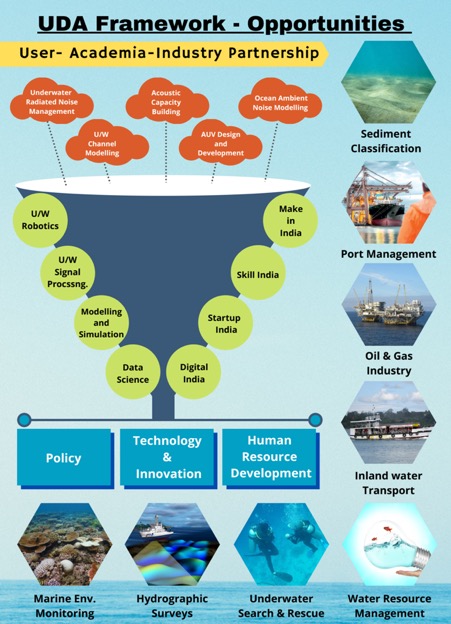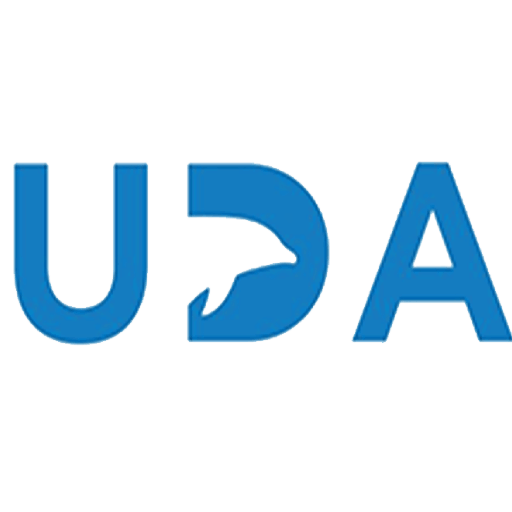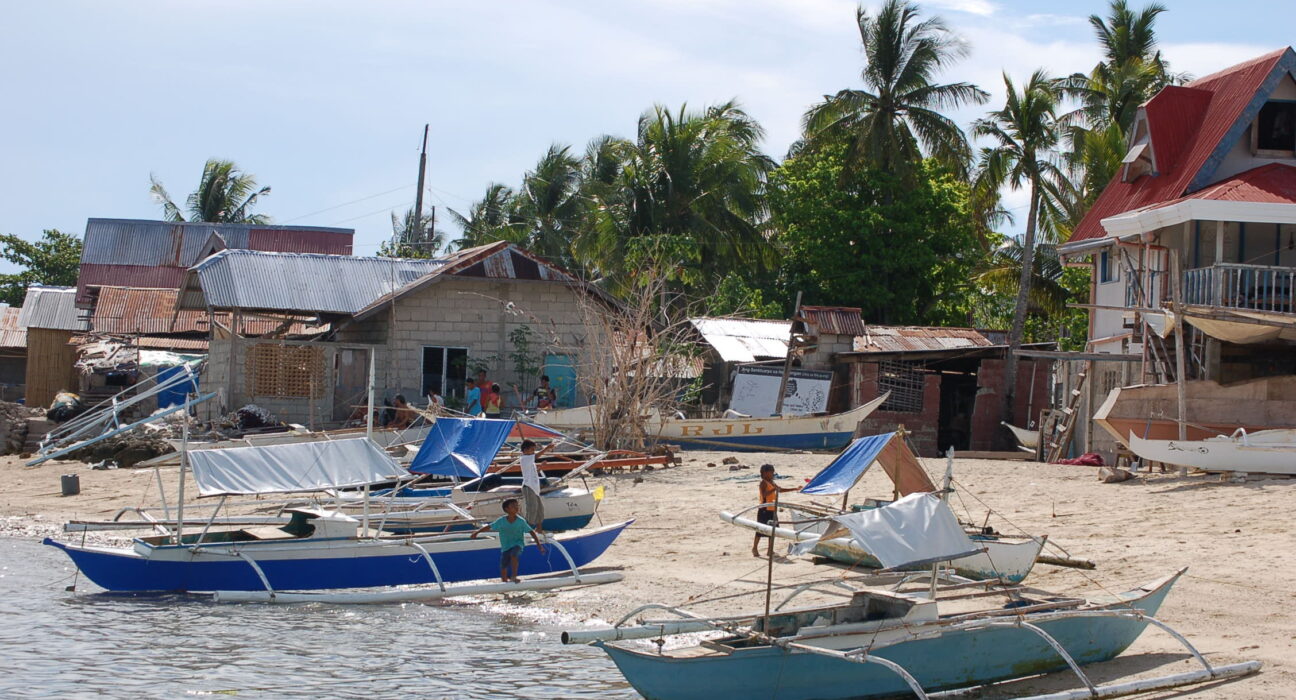Enhancing Livelihood for our Coastal Communities
Dr (Cdr) Arnab Das offers a new perspective based on the Underwater Domain Awareness (UDA) Framework
The new India we are witnessing today is aspirational and the young generation is looking for new avenues to build their future. While the maritime push by the government does provide multiple new opportunities, a more nuanced approach is required to comprehensively ensure sustainable and equitable growth for all in the region. We do need a master plan to strategically manage the resources and assets available to us. The coastal communities have a major stake in the maritime domain on all accounts including political, socio-economic and culturally. Making them part of the plan is extremely critical to evolve a more mature governance structure for the future.
With a coastline of over 7,500 km, India has much to cheer about; however, in the case of failure of effective maritime governance, this could become a cause of concern as well. The tropical littoral conditions in the Indian Ocean Region (IOR) further add to our challenges and opportunities and it is important that we use all the possible Science & Technology (S&T) means to enhance our Maritime Domain Awareness (MDA) for effective maritime governance. The underwater component of the MDA becomes even more critical as the traditional means fail to generate enough domain awareness. The vast undersea resources can be effectively explored and exploited only with effective Underwater Domain Awareness (UDA). The extensive coastline and large Exclusive Economic Zone (EEZ) presents its own challenges in terms of security and sustainable growth. Ensuring maritime governance in the absence of UDA is a non-starter. The pink area in Figure 1 depicts the tropical littoral region across the globe.

The tropical littoral waters of the IOR provide extremely rich bio-diversity that can provide unimaginable value in enhancing the livelihood opportunities for the coastal communities. Mechanical trawls with high capacity boats are ensuring high reach for corporate entities involved in fishing; however, in the absence of mature regulatory provisions, such activities could have an adverse impact on the local ecosystems. The traditional fishing ways that had evolved over a long period of time are well aligned to sustainable growth, but such means are not scalable. Effective UDA along with a little S&T hand holding for our coastal communities, backed with sound policy framework and monitoring mechanisms can do wonders.
It may be important to mention that the tropical littoral waters of the IOR also present substantial technological challenges in terms of sub-optimal sonar performance. The lack of serious indigenous efforts and complete reliance on import of sonars for underwater surveys has been a complete disaster. The degradation of sonar performance is of the order of 60%; this indicates that a survey in the IOR will require four times as much asset deployment as required in a temperate or polar region. This is a serious limitation in our UDA initiative and given the socio-economic challenges it is difficult to prioritise S&T to overcome these challenges. According to a credible study, the global fish stock is on the decline since 1997; however, due to trawling and lack of regulatory provisions, the by-catch in most parts of the world is of the order of 80%. It is quite obvious that we are wasting a precious resource that is on the decline. There is an urgent need to put in place effective regulatory provisions with sound UDA to enhance maritime governance.
The UDA framework proposed by the Maritime Research Centre (MRC), Pune is a comprehensive mechanism to encourage pooling of resources and synergizing of efforts across stakeholders including maritime security, blue economy, marine environmental regulators and disaster management authorities and science & technology providers. It talks about enhancing our acoustic capacity and capability building to address the UDA requirement on all the three counts – policy, technology & innovation, and human resource development. The indigenous efforts to manage the challenges and opportunities of the tropical littoral waters of the IOR require massive field experimental R&D initiatives. These are highly resource intensive and cannot be supported by any one stakeholder. Emerging technologies like acoustic sensors, underwater robotics and signal processing along with a sound data science infrastructure can potentially facilitate enhanced UDA; however, it requires political will to allow long term focus and sustained support. User-Academia-Industry partnership is the only way forward. The traditional knowledge of our coastal communities needs to be mapped with emerging S&T tools to make their endeavours scalable and build a regulatory framework to effectively manage sustainable growth for all in the IOR. It could also facilitate a leadership role for India in the region, in line with the SAGAR vision of the Honourable Prime Minister.
A conceptual framework constituting the foundation for developing a national UDA policy is represented in Figure 2. The underlying requirement for all the stakeholders is to know the developments in the undersea domain, make sense of these developments, and then respond effectively and efficiently to them before they can pose any challenge.

The UDA needs to be understood on a comprehensive scale in its horizontal and vertical construct. The horizontal construct would be the resource availability in terms of technology, infrastructure, capability and capacity specific to the stakeholders. Although the stakeholders represented by the four faces of the cube will have their specific requirements, the core will remain the acoustic capacity and capability. The vertical construct is the hierarchy of establishing a comprehensive UDA. The first level or the ground level would be the sensing of the undersea domain for threats, resources and activities. The second level would be making sense of the data generated to plan security strategies, conservation plans and resource utilization plans. The next level would be to formulate and monitor a regulatory framework at the local, national and global levels.
Figure 2 gives a comprehensive way forward for the stakeholders to engage and develop a cross-disciplinary outlook. The individual cubes represent specific aspects that need to be addressed. The User-Academia-Industry partnership can be seamlessly formulated based on the user requirement, academic inputs and the industry interface represented by the specific cube. It will enable a more focused approach and well defined interactive framework. Given the appropriate impetus, the UDA framework can address multiple challenges being faced by the nation today. Meaningful engagement of Young India for Nation Building is probably the most critical aspect deserving attention. Multi-disciplinary and multi-functional entities can interact and contribute to seamlessly synergize their efforts towards a larger goal.
To make it clearer, let us take the example of aquaculture and how the UDA framework can make an impact. The effective growth of aquaculture requires optimum underwater conditions suited to the species. The specific species grow more effectively in their own favourable conditions and thus, it is critical to position the right species in the right habitat. The seasonal fluctuation of the underwater conditions need to be managed and the spatio-temporal mapping of the entire underwater ecosystem is in order for effective management. The parameters that define the underwater ecosystem typically include temperature, dissolved oxygen, pH, alkalinity, hardness, ammonia, and nitrites. Depending on the culture system, carbon dioxide, chlorides, and salinity may also be monitored. A data driven, AI based system is in order to manage the spatio-temporal variations of the underwater parameters and appropriate mapping of the aquaculture activities right from the planning stage to operational management of the existing farms. MRC, Pune has been working on multiple such mapping projects for the IOR and these bring far more transparency for effective management of the aquaculture activities for the coastal communities. Figure 3 indicates the temperature variations along the Indian coast based on the underwater conditions across the four quarters in a particular year. Such real-time maps can enhance our management of the aquaculture farms in the coastal waters and help the communities to enhance their livelihood options. Making the right choices based on sound real-time data driven inputs can allow better management of the blue economic activities.

Another critical aspect is of maritime governance. With enhanced understanding of the eco-system and the emerging S&T inputs, we can have a master marine spatial plan to better manage the resources and assets. Typically, in the absence of such inputs, corporate entities are driving their own agenda based on their interest, and the coastal communities with limited access to the governance mechanism get left behind. Strategic policy making has to be driven by an effective UDA framework to put in place a nuanced master plan, so that there is peace and prosperity across the region and we achieve a mature maritime governance structure. Real-time UDA inputs will allow better operational management of the aquaculture farms and enhance their productivity. The government and other agencies can also support coastal communities with more certainty of enhanced productivity. The regulatory authorities will be able to better monitor any violation of the promulgated policies. Streamlining of the entire governance mechanism will be more objective and seamless.
The government and the corporate bodies on their part can invest in the larger infrastructure for setting up the entire regulatory framework and monitoring mechanism. Individual investors can build their own entrepreneurial ventures with a strong S&T backing to minimize the business risk. The initial cost of setting up entrepreneurial ventures will come down substantially and Start-up India and Digital India will be truly boosted. Academia needs to step in and build skill development programs in tune with the future requirement that are tightly linked to the industry focus and user choices. MRC has proposed multiple innovative skill development programs including Acoustic Survey to build the User-Academic-Industry partnership. Incubation centres backed by the UDA framework can encourage innovation and enhance the returns for start-up enthusiasts. Deep research with enhanced UDA can also facilitate intertwining of the traditional knowledge with modern S&T developments for sustainable growth for the coastal communities. Figure 4 presents the details of the UDA opportunities across stakeholders and provides a comprehensive structure for building the appropriate ecosystem and the master plan.

The UDA framework as proposed by MRC, Pune can substantially enhance the participation of the young generation from the coastal communities and help build their career options. The following can be taken up to enhance the livelihood possibilities for the coastal communities:
- Prioritizing of the UDA framework as a tool for enhanced maritime governance.
- Academia to build academic and research programs in tune with the emerging requirements of the coastal communities and the corresponding S&T to appropriately develop the much needed human resources.
- Data driven policy formulation to maximise the livelihood options with minimal risk of natural disruptions of the tropical conditions.
- Institution of a robust User-Academic-Industry partnership based on the UDA framework.
- Formalization of a nuanced strategic vision and grounded master plan to involve the coastal communities in decision making.
More inputs on MRC efforts in taking forward the UDA framework are available at https://mrc.foundationforuda.in/ and in a video on https://youtu.be/GESXFdWWIHc .

Dr. (Cdr.) Arnab Das
About Author
Founder & Director, Maritime Research Center, Pune


